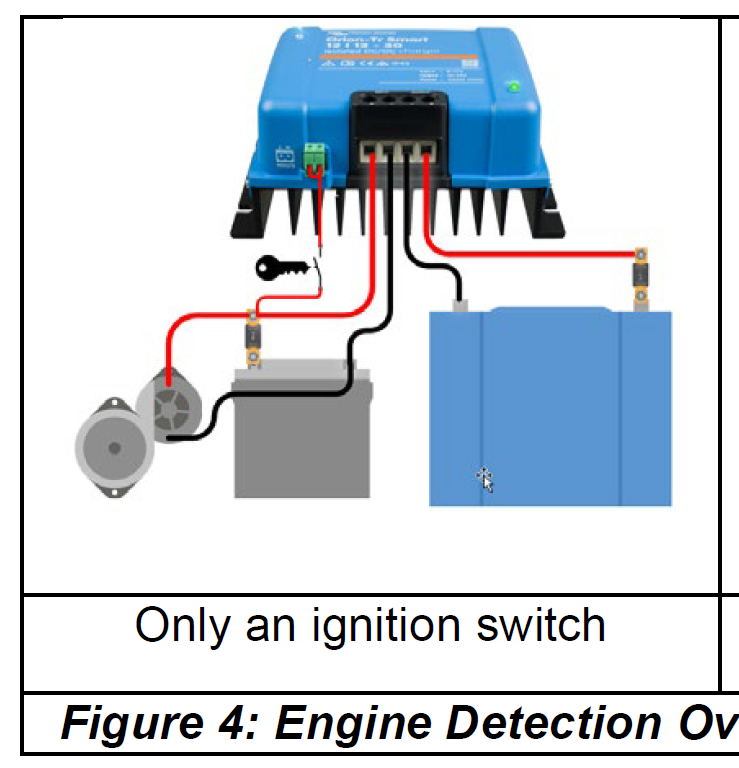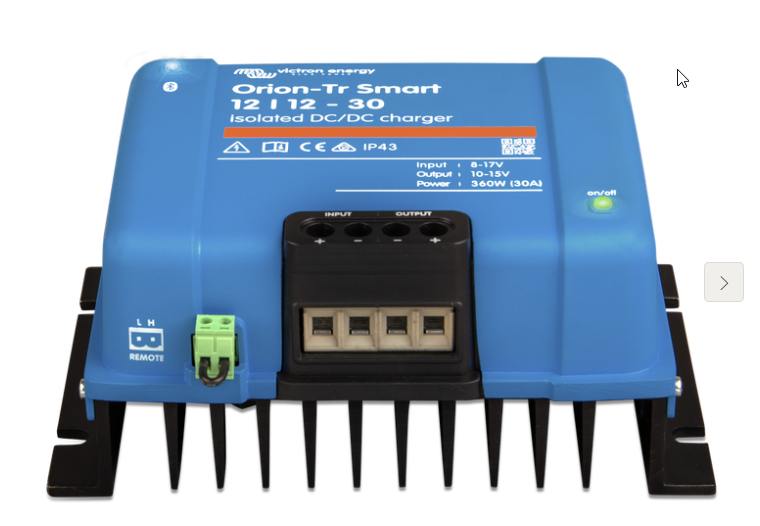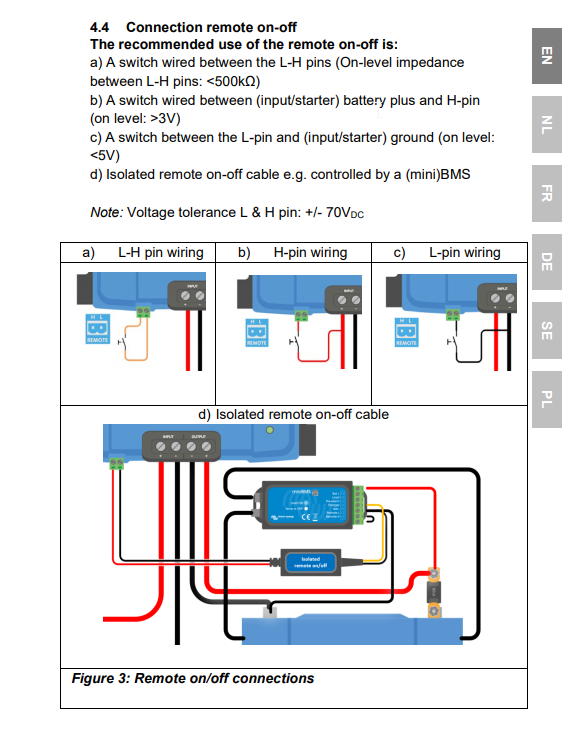Hello,
I'm getting a bit confused by the wiring diagram in the Orion smart manual. In this figure (most are very hard to see in the manual it show the ignition switch wired to the engine ignition power and them going to the H pin. but it also shows a bridge to the L pin. If im not mistaking adding this bridge will keep the unit always on..
I would like to have the unit charge from my house bank to my starter and bow thruster bank. I would like this charging to happen only when the engine is on.



